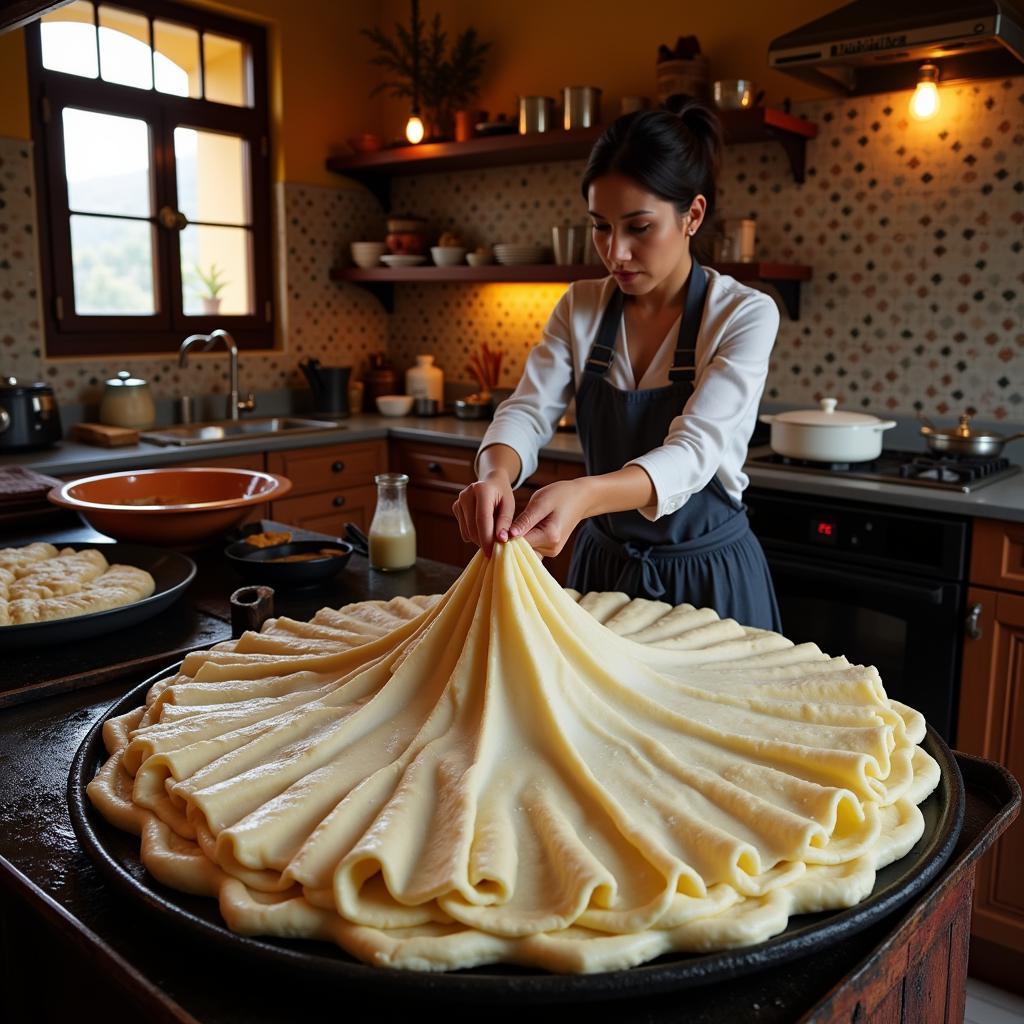A Delicious Journey into African Crepes
African Crepes, a culinary delight found across the continent, offer a unique taste of African culture and tradition. From the bustling markets of Marrakech to the serene villages of Senegal, these thin, versatile pancakes are a staple food enjoyed in countless variations. Let’s embark on a flavorful adventure to explore the diverse world of African crepes.
Unveiling the Diversity of African Crepes
African crepes, much like the continent itself, are incredibly diverse. While they share similarities with French crepes or American pancakes, African versions boast unique ingredients and preparation methods. The type of flour, the addition of spices, and the accompanying sauces and fillings vary widely depending on the region and cultural influences. This culinary diversity reflects the richness and complexity of African cuisine.
Injera: The Ethiopian Staple
In Ethiopia, injera reigns supreme. Made from teff flour, a grain unique to the Ethiopian highlands, injera has a slightly spongy texture and a distinctive tangy flavor. This sourdough flatbread serves as both plate and utensil, used to scoop up flavorful stews and curries. The fermentation process gives injera its characteristic airy texture and adds a depth of flavor that complements the rich sauces it accompanies.
Moroccan Msemen: A Folded Delight
 Moroccan Msemen Being Cooked
Moroccan Msemen Being Cooked
Moving north to Morocco, we encounter msemen, a square-shaped crepe cooked on a griddle. The dough, often made with semolina and all-purpose flour, is folded multiple times during cooking, resulting in a layered, flaky texture. Msemen can be enjoyed plain or stuffed with savory fillings like minced meat or vegetables. Its slightly chewy texture and buttery flavor make it a popular breakfast or snack food.
African Crepes: Beyond the Basics
Beyond injera and msemen, numerous other crepe variations exist across Africa. In Senegal, beignets, small, deep-fried fritters, are a common street food, often served with a dusting of powdered sugar. These sweet treats are a testament to the French influence on West African cuisine. In East Africa, pancakes made from millet or sorghum flour are enjoyed with various toppings, reflecting the resourcefulness and adaptability of African cooking.
A Taste of Tradition and Innovation
African crepes are more than just a food; they represent a connection to history, culture, and community. Often prepared for special occasions and family gatherings, these crepes embody the spirit of sharing and togetherness. While traditional recipes are cherished, there is also room for innovation. Modern chefs are experimenting with new flavors and ingredients, creating exciting contemporary variations of these classic dishes.
“African crepes are a testament to the ingenuity and creativity of African cooks. They transform simple ingredients into culinary masterpieces that tell stories of tradition and innovation.” – Aisha Ibrahim, Culinary Historian.
Exploring the Culinary Landscape of African Crepes
From savory to sweet, African crepes offer a wide range of flavors and textures. Whether you’re savoring the tangy injera with a rich Ethiopian stew or indulging in the flaky goodness of msemen with honey, each bite is a journey into the heart of African cuisine.
“The beauty of African crepes lies in their simplicity and versatility. They can be adapted to suit any occasion and palate, making them a true culinary gem.” – David Mbizi, Chef and Food Writer.
Conclusion: A Culinary Adventure Awaits
African crepes are a delicious and diverse culinary experience. From the unique flavors of injera to the delightful texture of msemen, these crepes offer a glimpse into the rich culinary heritage of Africa. So, embark on a culinary adventure and discover the magic of African crepes.
FAQ
- What is the main ingredient in Ethiopian injera? Teff flour.
- How is msemen prepared? It’s cooked on a griddle and folded multiple times.
- Are African crepes only savory? No, they can be both savory and sweet.
- What is the cultural significance of African crepes? They are often prepared for special occasions and symbolize community.
- Where can I find authentic African crepe recipes? Numerous online resources and cookbooks offer authentic recipes.
- What are some common toppings for African crepes? Stews, curries, honey, and powdered sugar are popular choices.
- Are there gluten-free versions of African crepes? Yes, some recipes utilize gluten-free flours like cassava or sorghum.
Other Questions and Related Articles
- Explore the world of North African cuisine.
- Discover the secrets of Ethiopian spices.
- Learn about the history of African food traditions.
Need support? Contact us 24/7: Phone: +255768904061, Email: kaka.mag@gmail.com, or visit us in Mbarali DC Mawindi, Kangaga, Tanzania.

